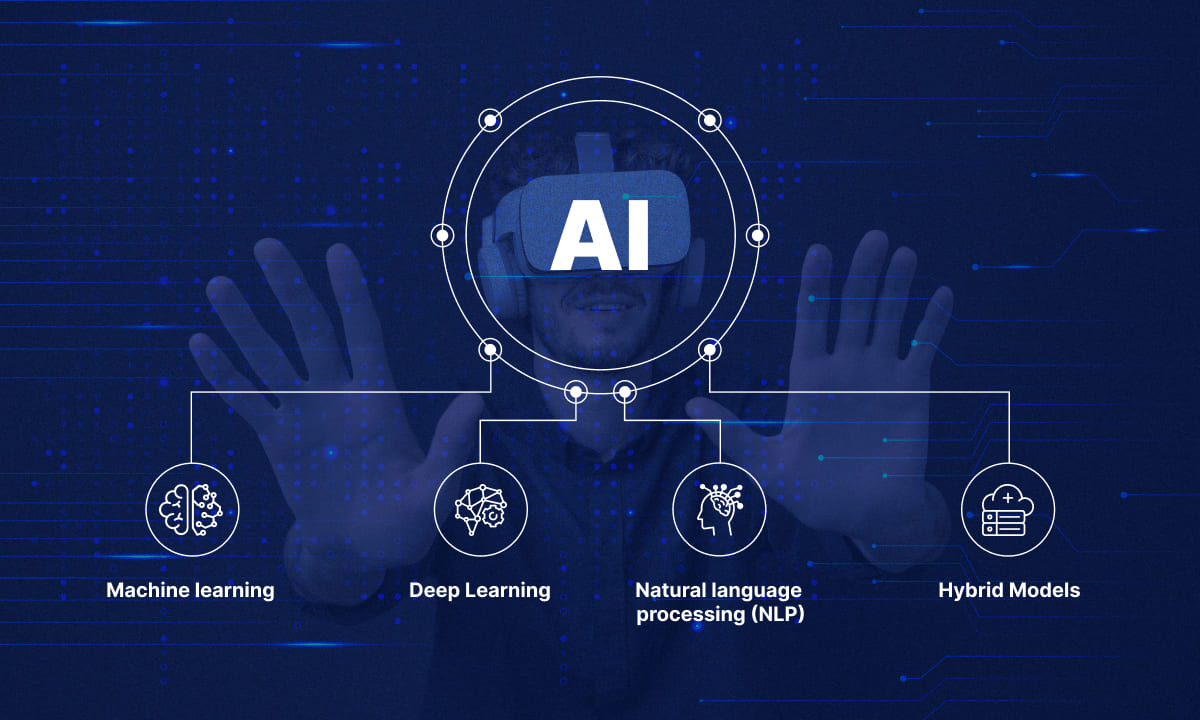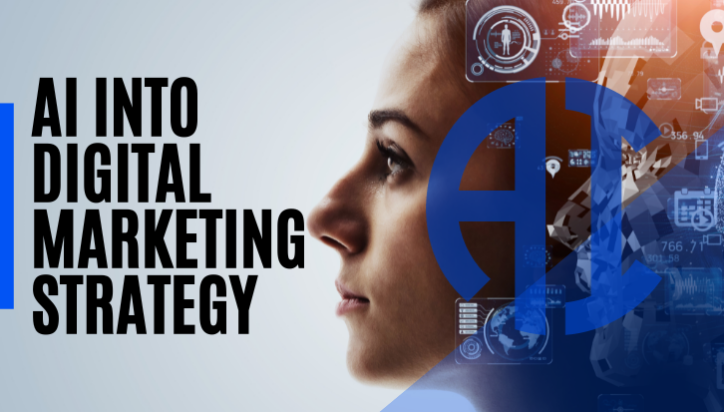In today’s data-driven world, data scientists have the opportunity to harness the power of enterprise generative AI tools to transform their workflows. These innovative tools enable the generation of insightful reports, the summarization of complex documents, and even the automated writing of code, all while enhancing productivity and decision-making. However, the adoption of these tools also brings challenges related to data security, model interpretability, and the risk of unintended consequences. This guide explores the significance of enterprise generative AI tools, their unique features, popular platforms, best practices for utilization, and practical applications that can revolutionize data science workflows.
Toc
- 1. Unique Features of Enterprise Generative AI Platforms
- 2. Popular Enterprise Generative AI Platforms
- 3. Best Practices for Utilizing Enterprise Generative AI Tools
- 4. Leveraging Enterprise Generative AI for Data Science
- 5. The Future of Enterprise Generative AI
- 6. Frequently Asked Questions (FAQ)
- 7. Conclusion
Unique Features of Enterprise Generative AI Platforms

The landscape of enterprise generative AI tools is distinctly different from consumer-focused solutions. Here are some key features that make them indispensable for data scientists:
Advanced Retrieval Augmented Generation (RAG)
RAG significantly enhances the accuracy and performance of large language models (LLMs). By integrating relevant data sources and knowledge bases, RAG pipelines empower data scientists to develop applications that yield reliable and contextually relevant outputs. For instance, RAG can be utilized for improving search functionalities and summarizing extensive documents, making it an essential component of enterprise generative AI tools.
RAG works by retrieving information from a variety of sources, including databases and document repositories, and then using that information to generate more informed responses. This capability is especially beneficial in sectors like healthcare, finance, and legal, where accurate and context-aware information is crucial for decision-making. For instance, in the healthcare domain, RAG can be used to analyze patient records, medical literature, and clinical trial data to generate personalized treatment recommendations. In finance, RAG can be employed to analyze financial news, market trends, and company reports to generate investment insights.
LLM Fine-tuning and Customization
One of the standout features of enterprise generative AI tools is the ability to fine-tune and customize LLMs. Data scientists can tailor these models to meet specific business needs, ensuring optimal performance across various applications. Techniques such as transfer learning and prompt engineering enable data scientists to adapt LLMs to domain-specific requirements, enhancing the relevance and efficacy of the generated content.
Fine-tuning allows organizations to achieve greater accuracy and relevance in their AI applications. For example, a marketing team might fine-tune a language model to generate more effective marketing copy tailored to specific customer demographics, leading to improved campaign performance and increased conversion rates. Additionally, fine-tuning allows organizations to take a pre-trained model and adjust it based on their specific datasets, which leads to better performance in niche areas.
Model Deployment and Management
Effective model deployment is crucial for the success of any AI initiative. Enterprise generative AI tools come equipped with robust MLOps (Machine Learning Operations) capabilities that facilitate seamless management of the entire AI model lifecycle. From deployment to monitoring and scaling, these tools simplify the complexities involved in maintaining high-performing AI applications.
MLOps frameworks provide a structured approach to managing the entire model lifecycle, from training and deployment to monitoring and updates. This ensures that models remain accurate and reliable as new data becomes available and business requirements evolve. For example, a financial institution might use MLOps to continuously monitor its fraud detection model, ensuring its effectiveness in identifying new fraud patterns and preventing financial losses.
Security and Compliance
Data privacy and security are top priorities in the enterprise environment. Enterprise generative AI tools are built with compliance in mind, addressing the stringent requirements of regulated industries. By incorporating data protection measures and promoting responsible AI development, these platforms enable data scientists to innovate confidently while adhering to necessary standards.
In industries such as healthcare and finance, where data sensitivity is paramount, enterprise generative AI tools offer features like encryption, access controls, and audit trails. These capabilities help organizations comply with regulations such as GDPR and HIPAA, ensuring that data handling practices meet legal requirements.
Popular Enterprise Generative AI Platforms

As the market for enterprise generative AI tools continues to expand, several platforms have emerged as frontrunners. Here’s a look at some of the most notable options available:
Scale GenAI Platform
The Scale GenAI Platform provides a comprehensive solution for data scientists aiming to create, test, and deploy enterprise-grade generative AI applications. With a focus on advanced RAG pipelines and secure deployment, this platform empowers users to leverage their data and expertise to its fullest potential. The platform is known for its user-friendly interface, making it accessible for data scientists at various skill levels.
Eviden’s Generative AI Acceleration Program
Eviden offers a Generative AI Acceleration Program that combines innovative solutions with expert consulting services. This program guides enterprises through the generative AI journey, from identifying high-impact use cases to securely scaling applications. Eviden’s approach emphasizes collaboration and knowledge sharing, ensuring that organizations can maximize the return on their investment in generative AI.
Google AI Platform
Google AI Platform is another powerful player in the generative AI space. It offers a suite of tools that enable data scientists to build, train, and deploy machine learning models at scale. With integrated capabilities for data management and model monitoring, Google AI Platform is well-suited for organizations looking to leverage generative AI for various applications, including natural language processing and image generation.
Amazon SageMaker
Amazon SageMaker provides a fully managed service that allows data scientists to build, train, and deploy machine learning models quickly. With built-in algorithms and support for popular frameworks, SageMaker simplifies the process of developing generative AI applications. Its extensive documentation and community support make it a go-to platform for many organizations.
Microsoft Azure AI
Microsoft Azure AI offers a comprehensive set of tools for building and deploying AI models. Its capabilities extend to generative AI, allowing data scientists to create applications that can generate text, images, and more. Azure AI’s integration with other Microsoft services enhances its functionality, providing a seamless experience for organizations already using the Microsoft ecosystem.
Best Practices for Utilizing Enterprise Generative AI Tools

To harness the full potential of enterprise generative AI tools, data scientists should adopt the following best practices:
Identifying Relevant Use Cases
The first step in effectively using generative AI tools is identifying relevant use cases. Data scientists must align these use cases with their organization’s business objectives and available data. Successful applications of generative AI span various industries, from automating customer support responses to generating personalized marketing content.
For example, a retail company may use generative AI to create tailored product recommendations for customers based on their browsing history and purchase patterns. By aligning the use case with business goals, organizations can ensure that they are leveraging generative AI effectively.
Data Preparation and Quality
The success of any generative AI application hinges on the quality of the input data. Data scientists should prioritize data cleaning, preprocessing, and annotation to ensure models are trained on high-quality datasets. This investment in data preparation is crucial for achieving accurate and trustworthy results.
Data preparation involves not only cleaning and organizing the data but also enriching it with relevant features that can enhance the model’s performance. For instance, including metadata or contextual information can significantly improve the quality of the generated outputs.
Model Evaluation and Monitoring
Ongoing model evaluation and performance monitoring are vital for maintaining the integrity of enterprise generative AI applications. Data scientists should employ various evaluation metrics and techniques to assess the quality, safety, and compliance of their models. Regular monitoring allows for timely updates and retraining, ensuring the long-term success of generative AI deployments.
Establishing a robust evaluation framework can help organizations identify potential biases in their models and ensure that they are generating outputs that align with ethical standards. This proactive approach to model evaluation is essential for maintaining trust in AI applications.
Leveraging Enterprise Generative AI for Data Science

The integration of enterprise generative AI tools into data science workflows can revolutionize productivity and decision-making. Here are some ways these tools can be leveraged:
Streamlining Content Creation and Summarization
Enterprise generative AI tools can automate the creation of high-quality content, whether it’s generating reports, crafting presentations, or producing technical documentation. Additionally, these tools excel at summarizing large datasets, allowing data scientists to quickly extract meaningful insights.
For instance, a marketing team can use generative AI to create engaging blog posts or social media content, freeing up time for creative strategy and planning. By automating routine writing tasks, data scientists and marketers can focus on higher-level strategic work.
Enhancing Exploratory Data Analysis
Generative AI can facilitate intuitive, natural language-based queries, enabling data scientists to explore their datasets more effectively. This capability can lead to the rapid identification of hidden patterns and trends, ultimately driving informed decision-making.
Data scientists can leverage generative AI to generate visualizations or summaries of data trends, making it easier to communicate findings to stakeholders. This ability to quickly translate complex data into understandable formats enhances collaboration and decision-making across teams.
Accelerating Model Development and Deployment
The customization and fine-tuning capabilities of enterprise generative AI tools significantly streamline the model development process. Data scientists can quickly iterate on their models, optimizing them for specific use cases and deploying them with confidence.
Moreover, the integration of automated testing and deployment pipelines within these tools reduces the time and effort required to bring models into production. This acceleration allows organizations to stay competitive by quickly responding to market changes and customer needs.
The Future of Enterprise Generative AI

Driving Innovation Through AI Collaboration
As enterprise generative AI tools continue to evolve, they play an increasingly crucial role in fostering innovation across various sectors. By facilitating collaboration between data scientists, domain experts, and business leaders, these tools enable the discovery of innovative solutions to complex problems. Generative AI can help identify new product ideas, optimize supply chains, and enhance customer experiences, paving the way for transformative business models.
Ethical Considerations and Responsible AI
With the growing capabilities of generative AI, it is essential for organizations to focus on ethical considerations and responsible AI practices. Businesses must ensure that their AI models are transparent, fair, and unbiased, building trust among customers and stakeholders. This involves developing clear guidelines for AI ethics, implementing rigorous testing for bias, and fostering a culture of accountability and inclusivity.
Preparing for Future Developments
The future of enterprise generative AI promises continued advancements in natural language processing, image generation, and beyond. Organizations should prepare for these developments by investing in ongoing education and training for their teams. Keeping abreast of the latest trends and breakthroughs will enable businesses to harness emerging AI technologies and maintain a competitive edge.
In conclusion, the integration and evolution of generative AI in enterprises offer vast opportunities for innovation and growth. By adopting best practices and preparing for future advancements, organizations can unlock the full potential of generative AI, driving successful transformations and staying ahead in an ever-evolving digital landscape.
Frequently Asked Questions (FAQ)

What are the biggest challenges in deploying generative AI in the enterprise?
Key challenges include ensuring data privacy and security, maintaining compliance with industry regulations, and managing the scalability and reliability of generative AI applications. Enterprise generative AI tools address these challenges by offering robust security features and scalable deployment options.
How can I ensure the security and compliance of my GenAI applications?
Adhering to platform-specific security and compliance features is crucial. Data scientists should collaborate closely with their organization’s IT and compliance teams to ensure that generative AI deployments meet all necessary standards and regulations.
What are the best resources for learning more about enterprise generative AI tools?
Data scientists can explore documentation and resources provided by leading enterprise generative AI platforms, stay updated through industry publications, attend relevant conferences, and engage with online communities focused on advancements in this field.
Conclusion
Enterprise generative AI stands as a powerful component in transforming how organizations approach data-driven decision-making. By leveraging these advanced tools, companies can automate labor-intensive processes, derive nuanced insights from vast datasets, and foster a culture of innovation via interdisciplinary collaboration. As enterprises increasingly adopt AI, it’s imperative to prioritize continuous learning and adaptability amidst rapid technological evolution. This entails a proactive commitment to integrating new AI capabilities, addressing ethical considerations, and maintaining a stable infrastructure for scaling AI solutions. In doing so, organizations can not only enhance operational efficiency but also drive strategic growth and competitive advantage in a data-rich global market.




